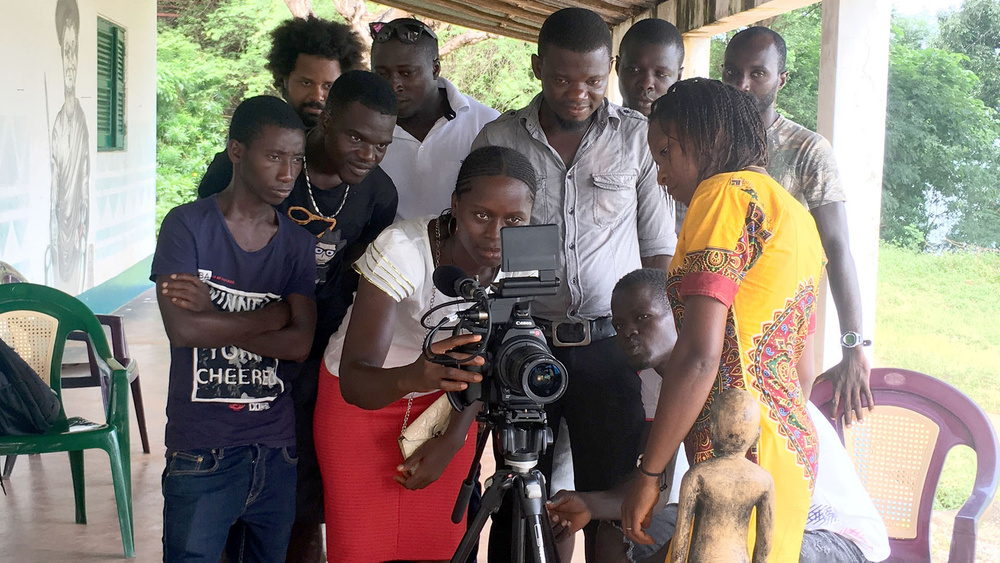Tchon Tchoma
Workshop in collaboration with IBAP
Statues Also Die, the anti-colonial film/pamphlet from 1953 by Alain Resnais, Chris Marker and Ghislain Cloquet, is one of the first Western cinematic statements against the core of colonial appropriation and extraction of the resources. Considered as one of the first anti-racist films known in Western cinema culture, Les Statue Meurrent Aussi, insightfully and poetically tackles the main systemic program of colonialism by following the extraction and musealisation of objects of rites upon being taken away from their African context. While this might be the first anti-colonial film, the hundreds of years of resistance against this violence are inscribed in the art and rituals of these plundered cultures. The film was quickly censored by French Ministry of Culture. Still, the film serves as a reference for the power of media in relating and creating counter narratives.
The sculptors of Bijagós island are known as the most talented in carving their animist epistemologies on wood. Their lives are closely entangled with animated and inanimated entities that inhabit the 88 islands of the Bissagos. The Bijagós ethnic group developed an ambientalist cosmology that protects the ecology of the archipelago through its sacralisation. In this case, the carved wood has been the media, inscribing knowledge for future generations in a language not to be decoded by outsiders.
The workshop “Tchon Tchoma” (Soil Coling in Creole) departed from a narrative: a Bijagós sculpture’s return from Berlin back to Bubaque, the island where it was carved. This return activates various problematics and raises complicated questions: What is a “ritual sculpture”? What is a “touristic sculpture”? What are the differences between the two terms? What happened with the ritual sculpture once it was stolen from the Baloba (Bijagó sacred temple) and displayed to the West in a museum? What happened to the spirits and sacred entities inhabiting it? What does restitution mean? What would it mean to reproduce the sculptures digitally and printing it in three dimensions for musealisation? What is their economic worth and social power? If statues also die, what does it mean for a sculpture to be alive? What is the position of the Bijagós sculptors towards their returned work?
Cadjigue in dialogue with Marinho de Pina and Filipa César organically created a research methodology that included questionnaire preparation, interviews, debates, creative writings, scenario building, speculation, ideas for forensic crime scene investigation, representation, sci-fi, music, etc. “Tchon Tchoma” (Soil Calling) will be eventually worked as an experimental case study dealing with issues of restitution of colonial extractions of art and culture in the form of a radical science-fiction film that the Cadjigue will develop. Through humour and sharpness, it aims to reveal several positions and subjectivities on the longtime open wound of colonial culture appropriation.






